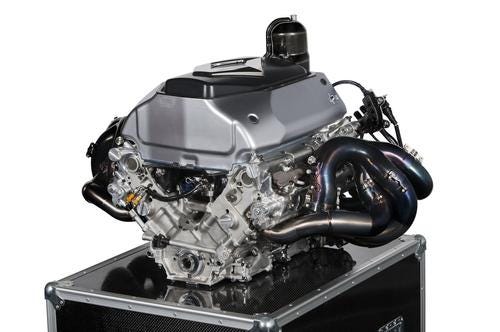Renault Fast Tracks CAD Interoperability
July 25, 2012

Engineers across industries are still struggling to get over the hump of CAD interoperability, but Renault Sport F1 is racing ahead with its long-proven strategy for dealing with multi-CAD.
The company, which is supporting four teams in this year's FIA Formula One World Championship with its RS27 V8 engine, is managing the multiple CAD systems and racecar configurations using Elysium Inc.'s interoperability tools. Jean-Francois Plusquellec, PLM manager at Renault Sport F1, told us that this allows his company to steer a course toward "paperless manufacturing" and more efficient interchange with suppliers across the globe.
Working with suppliers is "our No. 1 issue," he said. "We need to have a lot of loops between our design team and our suppliers, and we need to have high quality for the 3D translation."

Using Elysium's technology, Renault Sport F1 has created a supplier portal that integrates with its ERP system and product data management system and allows suppliers using different CAD programs to exchange data and models quickly and accurately without manual translation or cleanup on Renault's end. The Elysium solution automatically encapsulates Renault Sport F1's processes and workflows and maintains a supplier profile that specifies the target software and release level, establishing a platform for easy interoperability.
The Elysium software powering the portal translates the CAD files into the appropriate CAD format specified by the supplier. Each model is checked for geometric defects before and after the translation. Suppliers can then tap these 3D models to quote prices and delivery dates to Renault Sport F1 and to provide any feedback about design changes that might be necessary for manufacturing.
Renault has pulled out in front in addressing multi-CAD interoperability, and other engineering organizations are more than a few laps behind. Despite years of effort and myriad tools for addressing the CAD interoperability challenge, engineering groups still report problems and inefficiencies trying to deal with what has essentially evolved into a heterogeneous CAD world.
We reported last month on a survey from the CAD provider PTC that showed CAD interoperability remains a pressing problem for a host of manufacturers and supply partners. In the survey of 7,000 CAD users and engineers worldwide, almost half (49 percent) complained that importing models from other CAD tools is difficult using their software, and 59 percent said modifying imported models from other packages is a challenge using their CAD programs. Even trying to modify models from a peer engineer using the same CAD tool isn't necessarily easy. Nearly 40 percent of respondents reported problems there.
It's not that solutions haven't been offered. It's just that they have fallen short. Engineers have long complained that industry CAD data-sharing standards like IGES and STEP take too much intelligence out of the 3D model, and that vendors haven't gone far enough in providing interoperability tools, because they want to lock users into their own CAD environments.
I'm happy to report that the thinking has shifted dramatically in the last few years. As stories like this one show, progress is definitely being made. But as the PTC survey shows, too many engineering organizations still see CAD interoperability as a speed bump they don't want to negotiate. And that's just not going to cut it in a world where time-to-market is everything and design partners often span the globe.
Related posts:
About the Author(s)
You May Also Like
.jpg?width=300&auto=webp&quality=80&disable=upscale)


